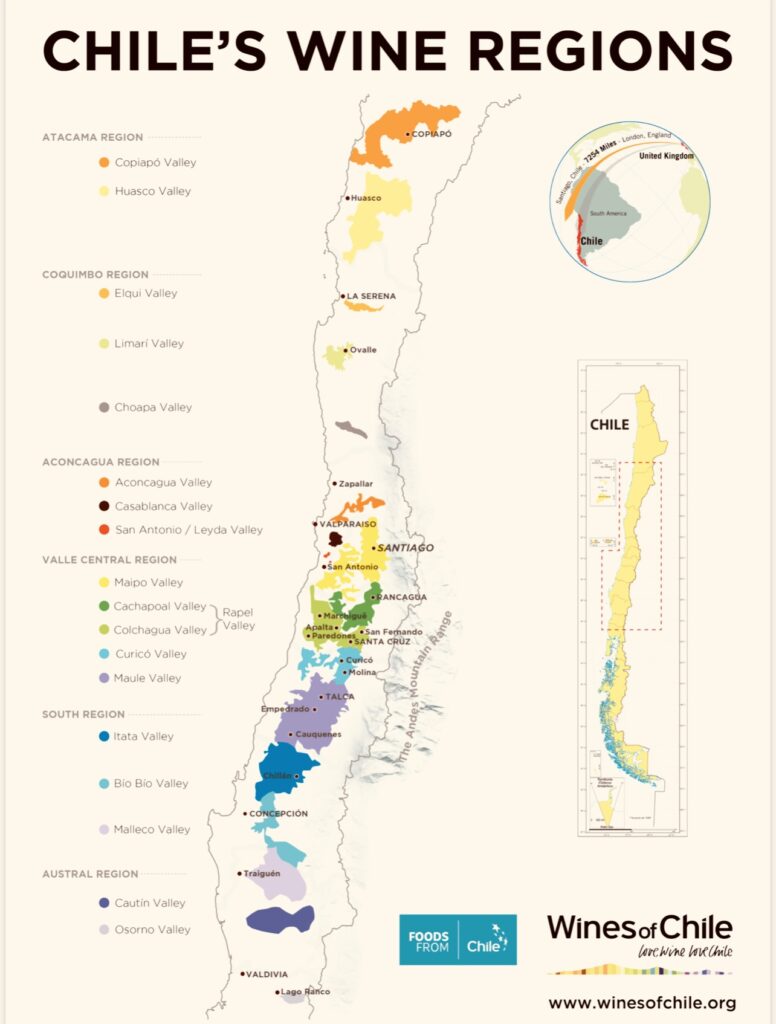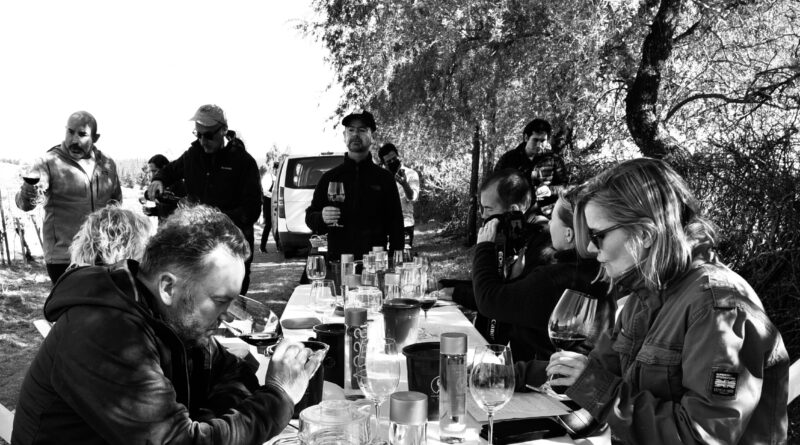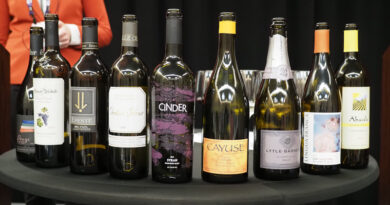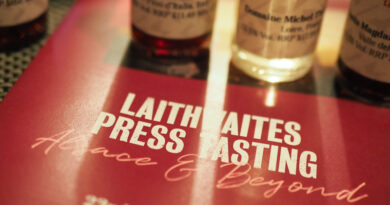Dry-farmed Chile, the exciting wines of the South (1) VIGNO in Maule
Chile is changing, drafting a new constitution and facing up to the past.
Chilean wine has been changing too, adapting to climate change and making wines that are no longer facsimiles but reflective of terroir and regional culture.
Lisse Garnett and Jamie Goode travelled from Santiago to Maule to Itata to Pućon and back to meet small and large producers and taste their wines with the generous support of ProChile and Gobierno Regional de Maule.
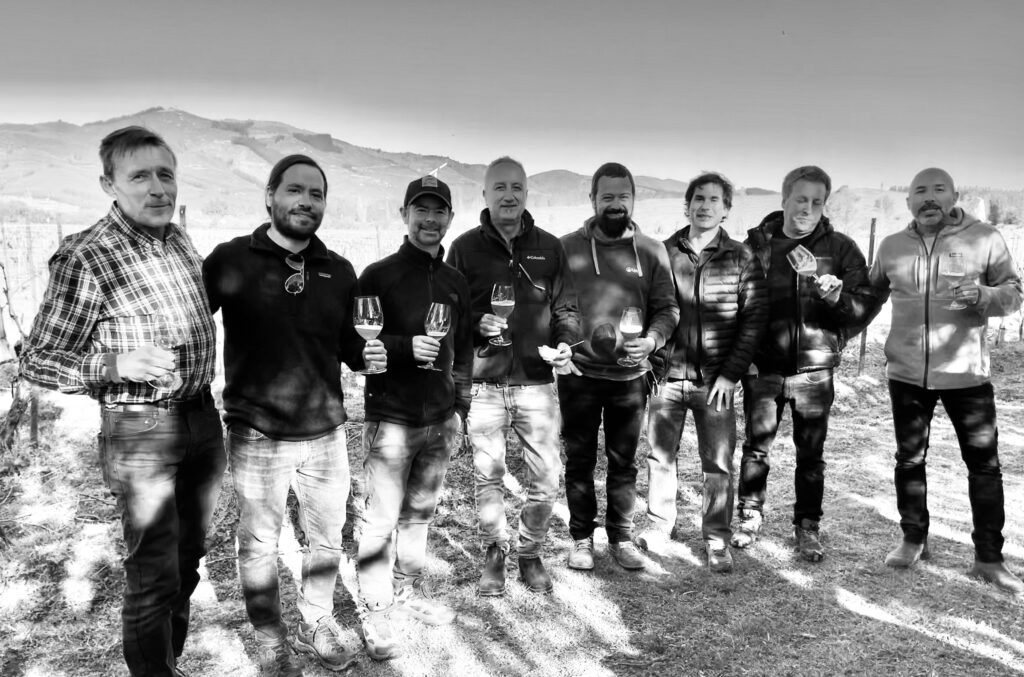
Part 1: VIGNO in Maule
Chile has moved so far in such a short time, it’s the main focus of Book 3 of the infamous Sideways trilogy in which Miles, fresh from LA laments the standard of its (predominantly instant) coffee, experiences an earthquake, negotiates the appellations and of course meets countless women.
The earthquake situation has not changed, nor has the coffee and nor has the baffling appellation system. I cannot comment on the women.
The wines though have changed – even the great icon wines are improving though they appear to have run out of points.
New regions are opening up and small producers are keen to export – Chile has always been a country for doing business abroad. The domestic consumption of wine is limited unlike in Argentina so small producers face a real challenge when it comes to selling their wines overseas.
As an ex importer it’s hard to make the sums add up. That’s why organisations like Vigno are so important. Vigno has a broad spectrum of producers who have worked together to establish an appellation in Maule for wines made from old vine bush trained Carignan.
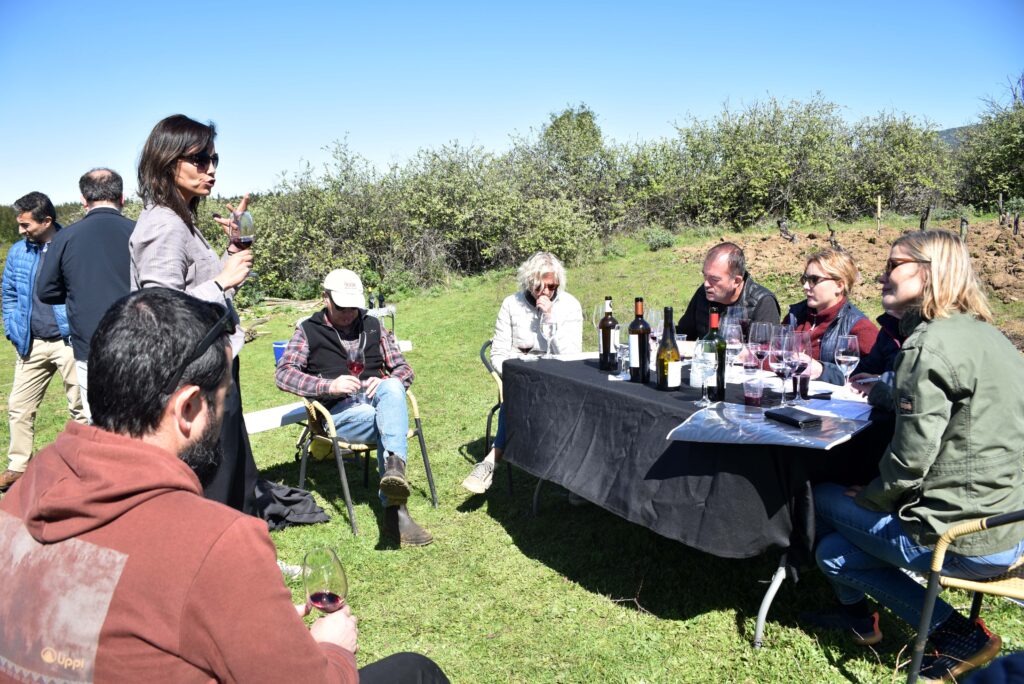
It was earthquakes that seeded Carignan in the first place. Thousands died when huge quakes racked Maule in 1938. This poor region was already populated by subsistence farmers, barely scratching a living from the land. The Chilean government sponsored Carignan plantings to support starving farmers and bolster the local Pais (seen as thin and low quality). This was considered a viable long-term solution to the farming crisis.
Carignan – ubiquitous about the Languedoc before the great EU sponsored vine pull scheme, was the mainstay of cheap bulk wine production in France’s industrial north (See An Ode to Carignan). Much of it bitter and foul, it was rumoured to be the principle component of the EU wine lake. Carignan though high yielding when young (up to 11 tonnes an acre) is susceptible to mildew and rot and late to ripen, this led to many vines in Chile being abandoned.
Today however these now ancient vines are yielding treasure. Having survived with little intervention, old bush trained Carignan can produce luscious, velvety, voluptuous wines of some quality.
Earthquakes hit Maule again in 2010, the year VIGNO was formed. This collective seeks to preserve old Carignan vines, raise prices for the grapes and form an appellation. They have managed this with some success. Many of the wines we tasted come from well recognised brands both in the UK and the US, that’s all down to VIGNO.
70% of any VIGNO labelled wine must be old vine bush trained Carignan and see two years of ageing. It must also display the VIGNO branding in letters larger than that of the producer on the label.
In most vineyards in Latin America you will meet with a hole – much like a freshly dug grave, these pits are everywhere and exist to show the detail of the soil structure below. They clearly illustrate a shift from wines made in the winery to wines made according to terroir.
Another must have accessory in any Chilean vineyard is a horse and plough. We met several. Ploughing furrows in which water might gather in poor dry farming areas is a huge part of the local farming tableau.
We tasted wines from 14 different producers whilst the horse kindly ploughed for photos..
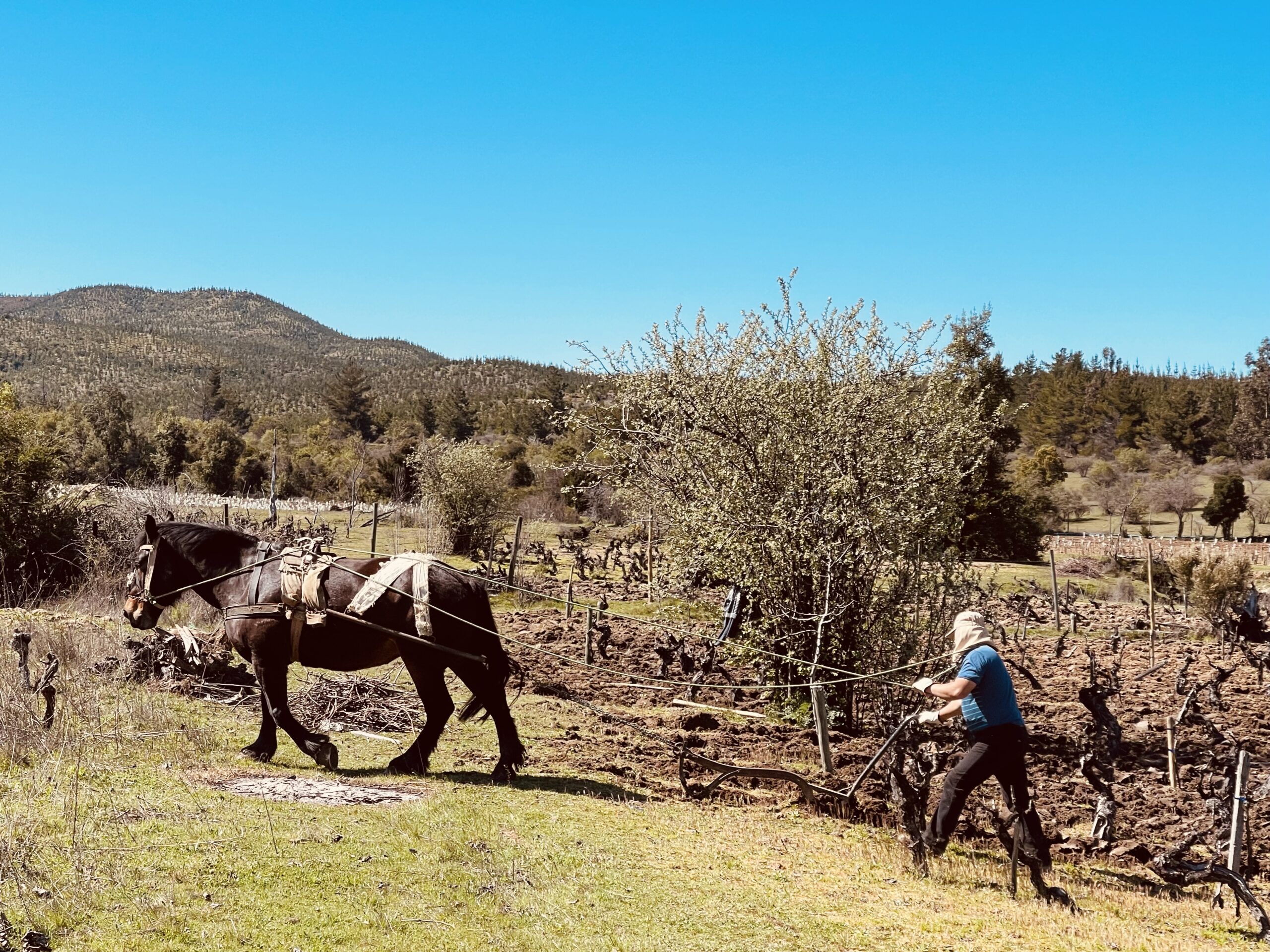
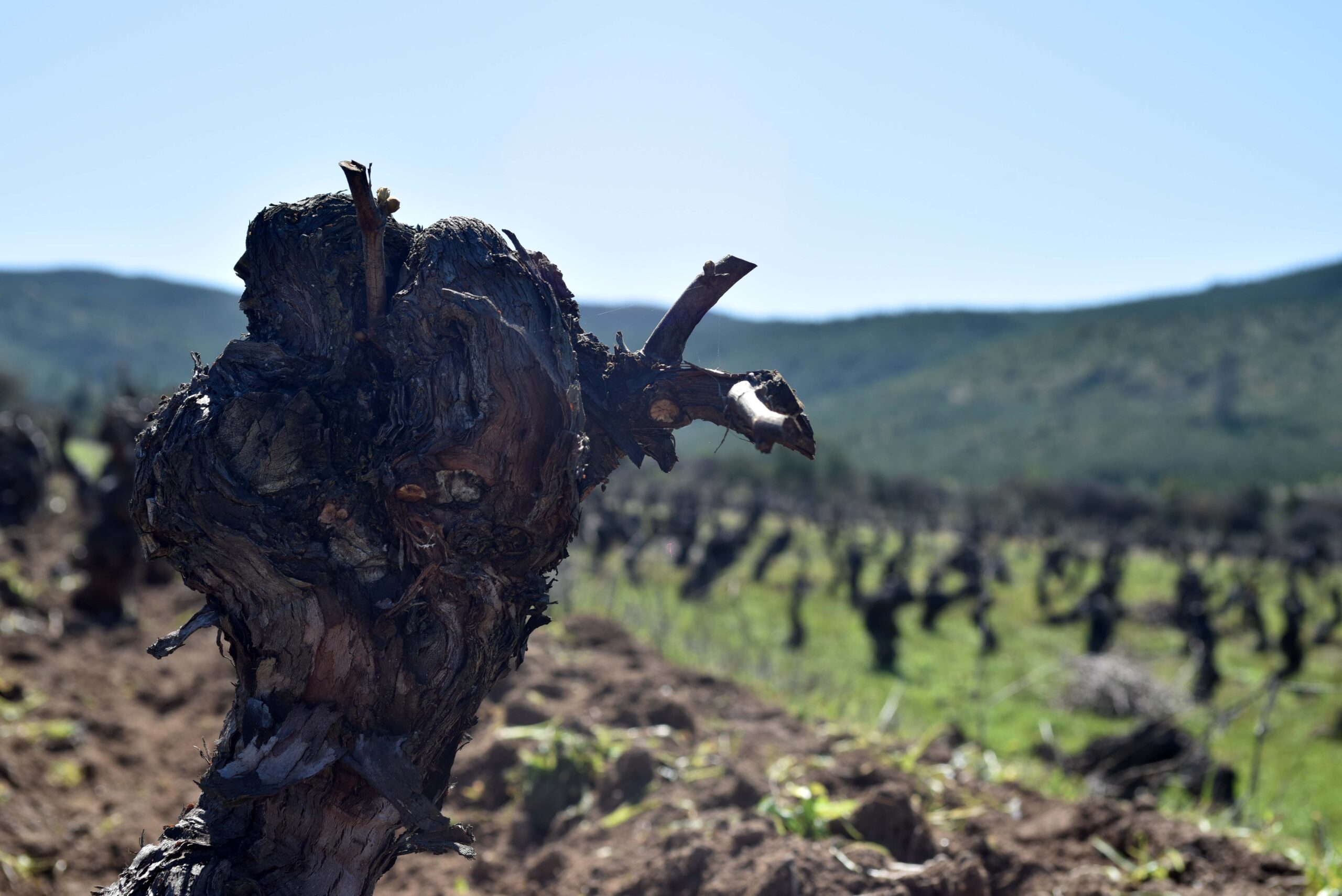
Maule notes – Vigno
VIGNO is a collaborative project that started in 2010 when a group of winemakers began to recognise the exceptional quality of Carignan from dry-farmed vineyards in Maule. In the 1930s the government in Chile saw Carignan as the solution to the lighter coloured, low acid wines of Pais – Carignan provided high acidity and high colour. The problem with Carignan is its susceptibility to powdery mildew: while Pais needed just a couple of treatments a year, Carignan needed 8-12. For this reason, Carignan got forgotten for 50 years, but in the late 1990s a number of wineries recognized its potential.
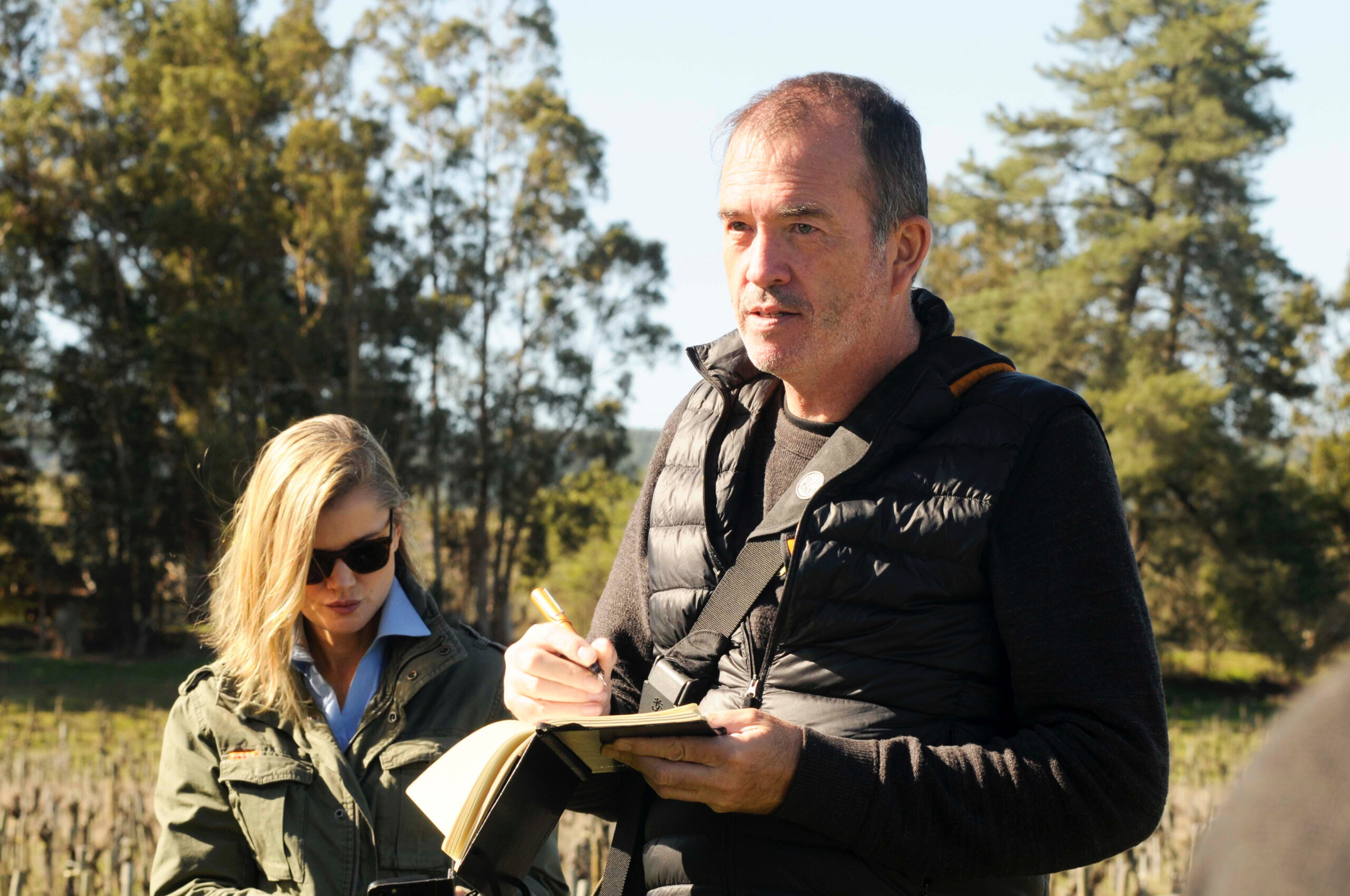
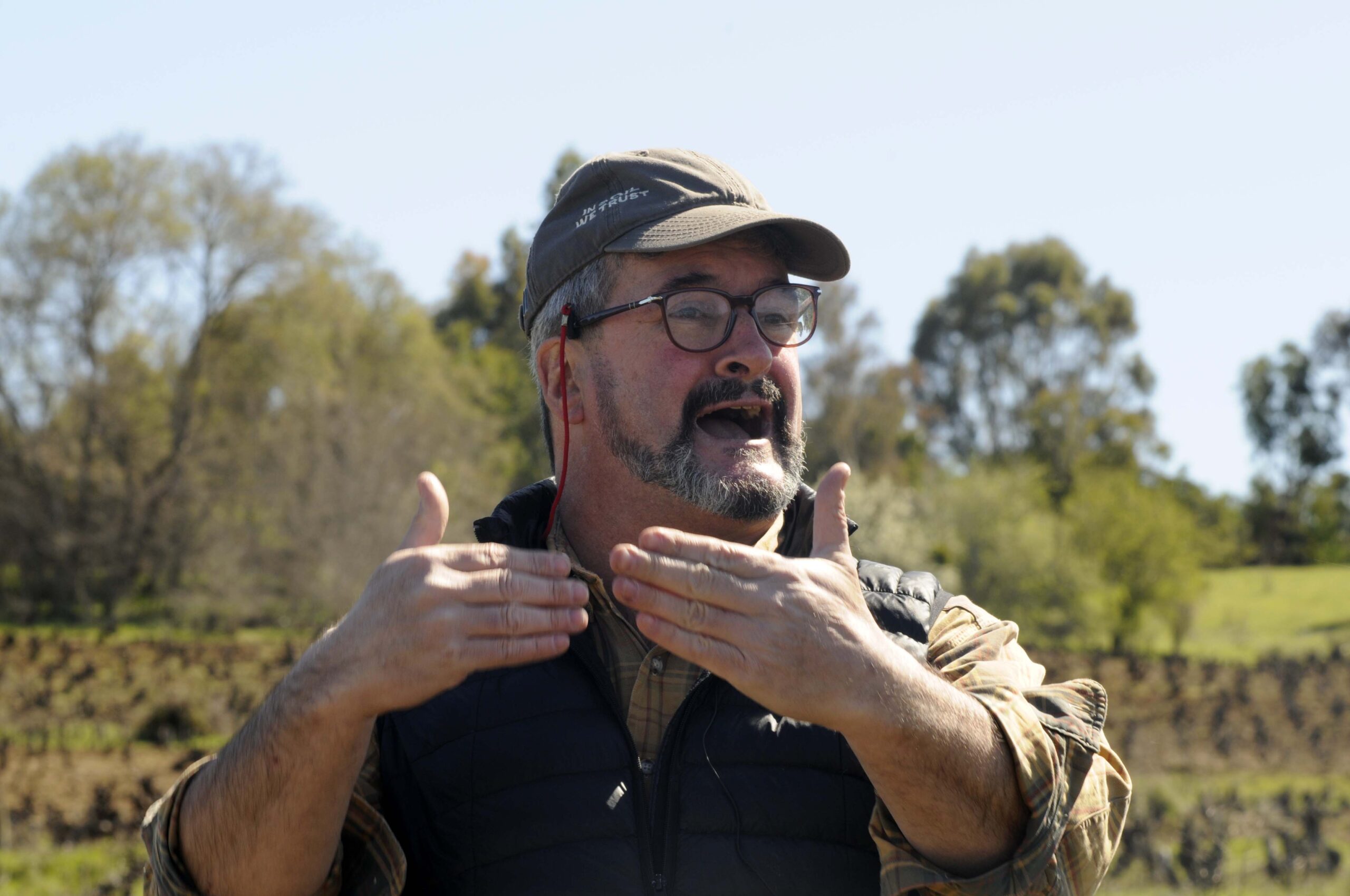
Gillmore was the first to bottle a varietal Carignan in 1994. They weren’t allowed to label it as Carignan because this variety was regarded as common, not noble. They entered a dialogue with the government and this was changed by the end of the 1990s.
VIGNO was a gathering of 12 different wineries who wanted to create a common brand. The rule is that VIGNO has to be the most prominent entry on the label, to reinforce the brand.
We tasted the first set of wines in the Truquilemu vineyard near the town of Empedrado.

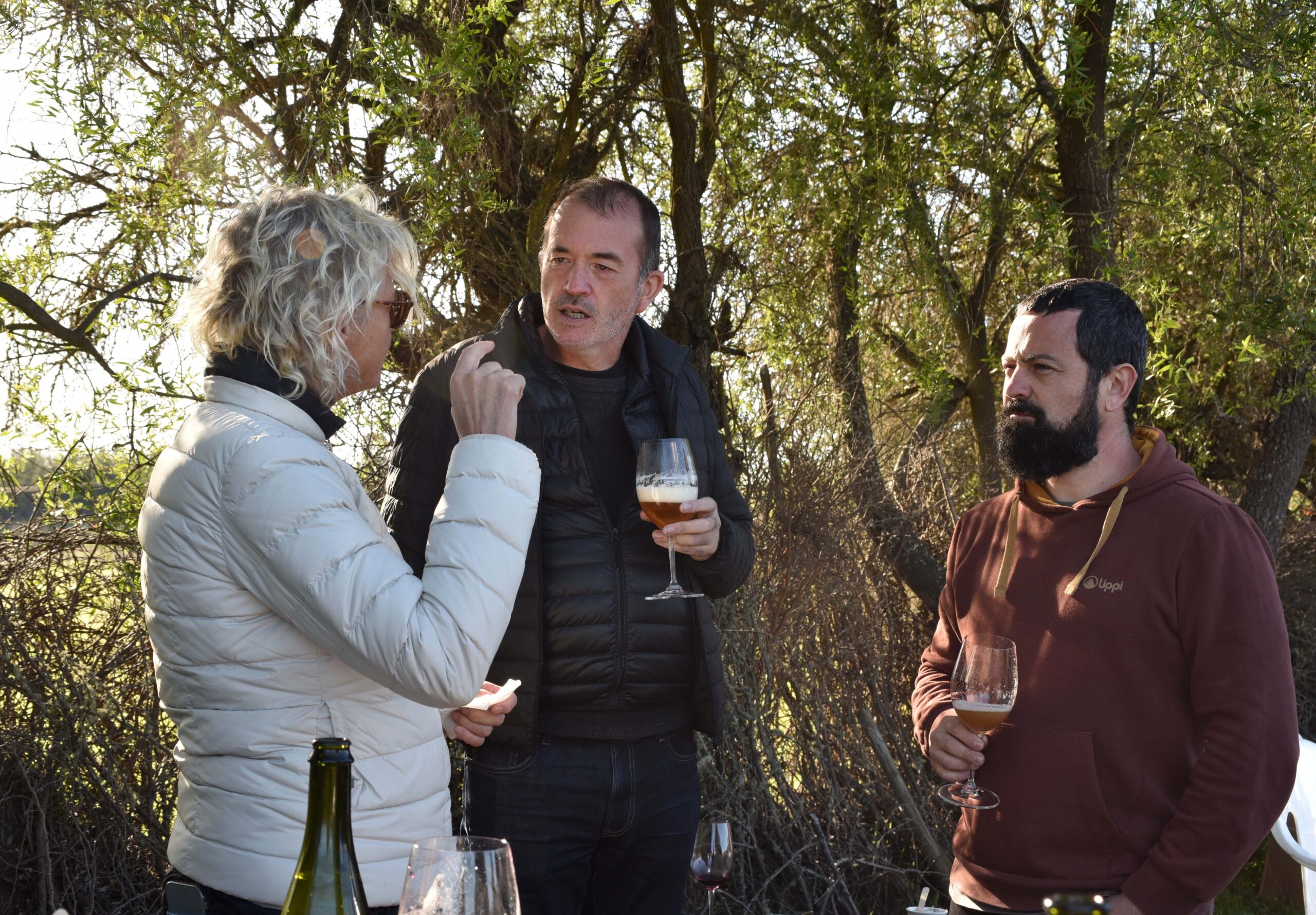
‘The coastal range is low here,’ says Edgard Carter of Carter Mollenhauer, ‘so you always have a coastal influence. The weather in Chile depends on the Pacific. The closer you are to it, or the more open the funnel, the cooler it is.’
Carignan is a Mediterranean variety that needs less extraction, says Gillmore’s Andres Sanchez. ‘So we are lazier in the cellar and busier in the vineyard. Mediterranean varieties that love the sun hate the oak.’
‘You have a limited window for harvest,’ he says. ‘In just a week or two you can lose the freshness. We have five months with no water. At harvest time the days are getting shorter. Normally harvest is 8-15 April.’ For the southern hemisphere, this is very late indeed.
The rule for VIGNO is that the vines must be 30 years old. ‘Young Carignan in a deep soil is a monster,’ says Andres. ‘To get a good one you need old vines.’ You have to have 90% of the vines this age and the 10% allows for replacement vines in old vineyards.
The wines are 85% minimum Carignan. This allows for field blends, and the 15% balance must be old vines, dry farmed, from Maule. The project has had a social impact, because in the past these vineyards made grapes for bulk wines sold at a very low price. Now, they are fetching 1-1.5 dollars a kilo.
‘One of the things we like about Carignan is the acidity’, says Eduard. Torres first made Carignan here in 1996 and it is alive still.
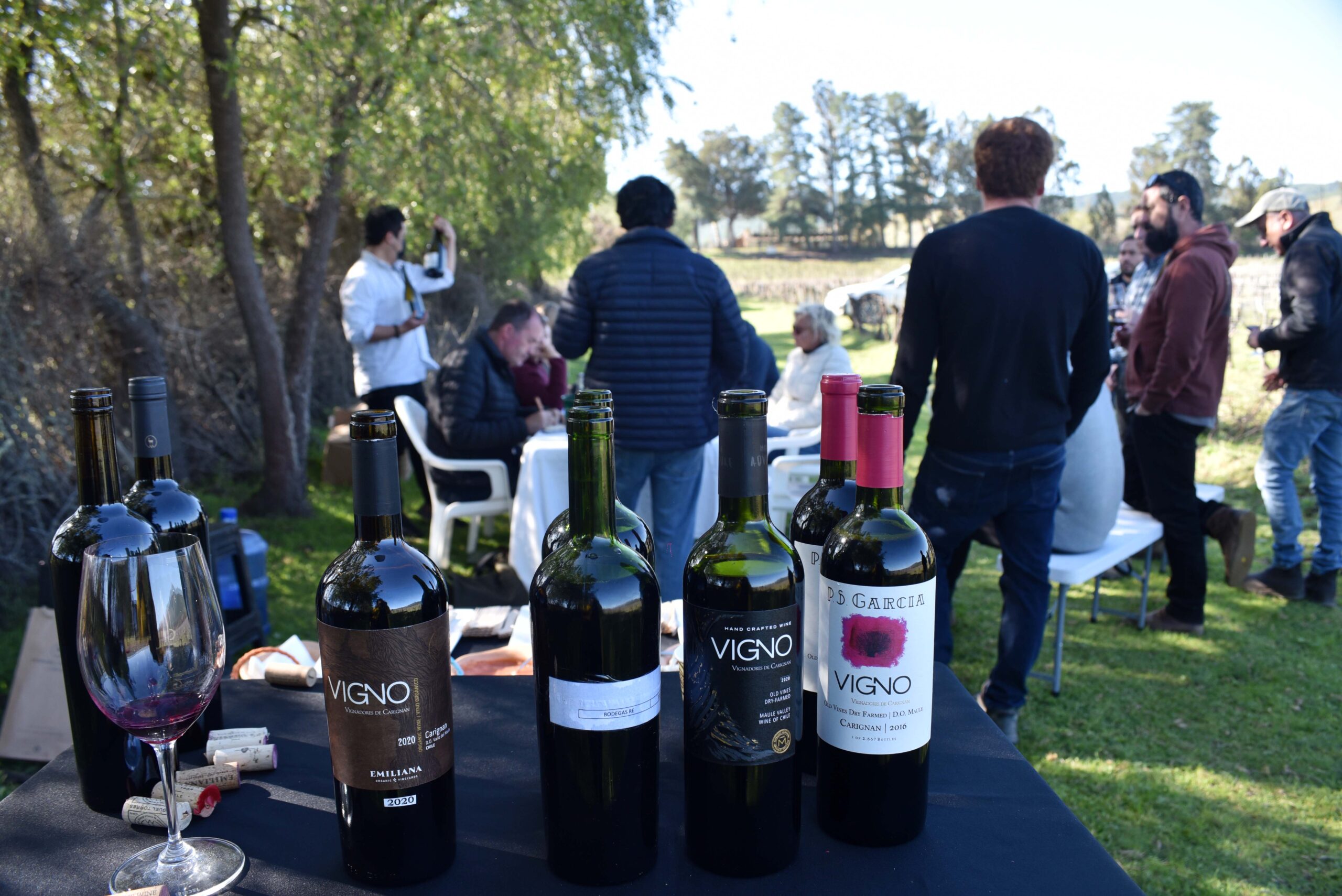
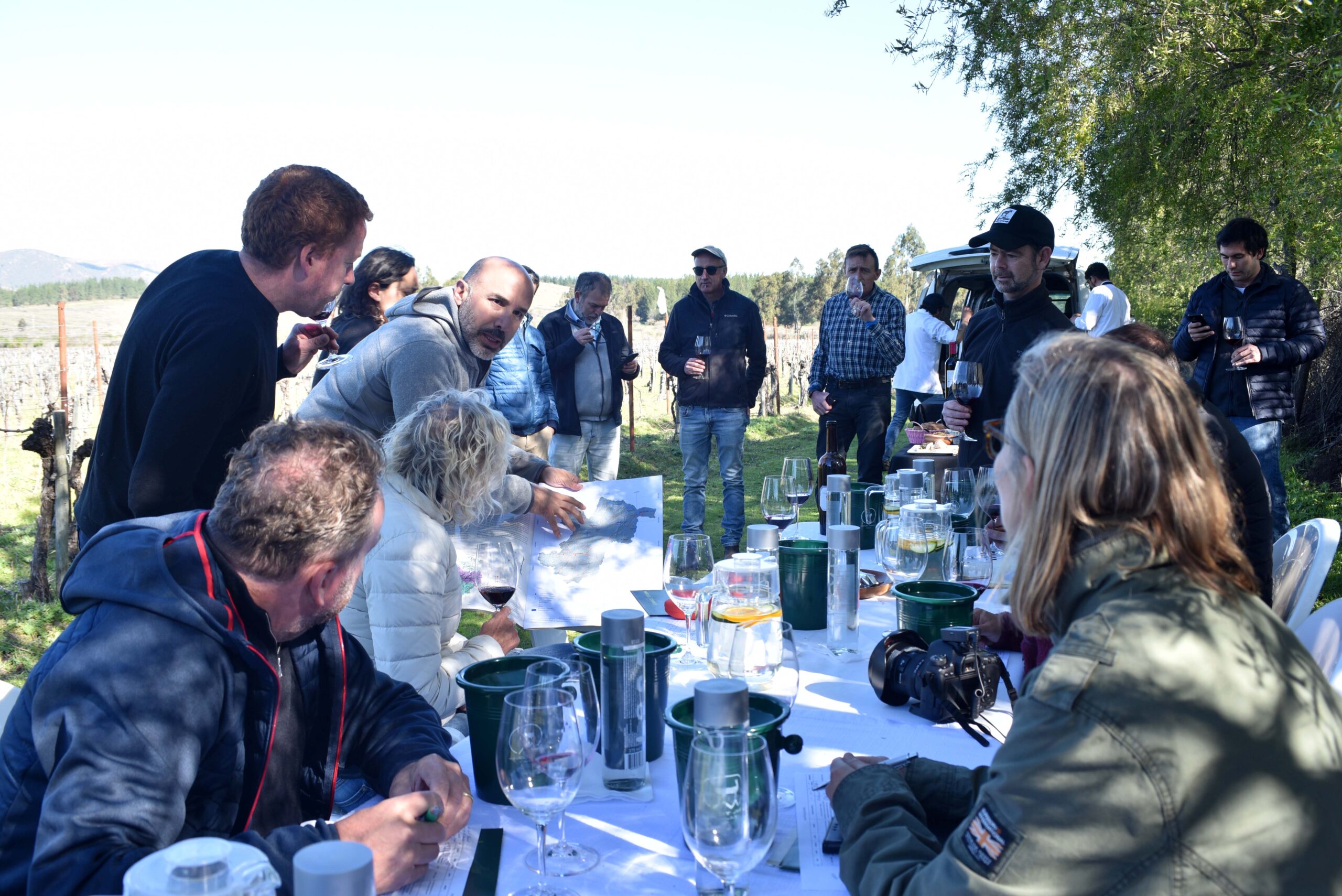
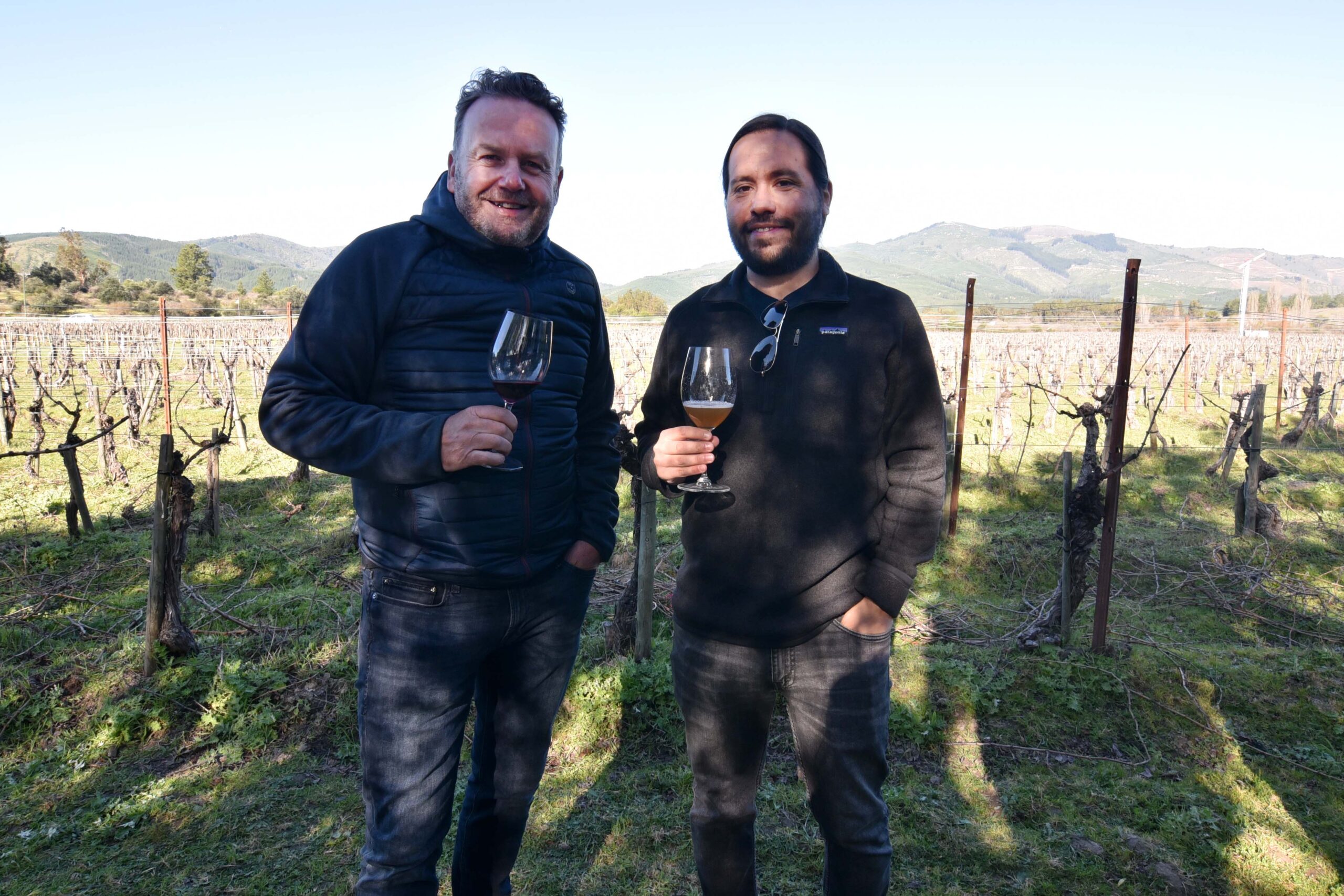
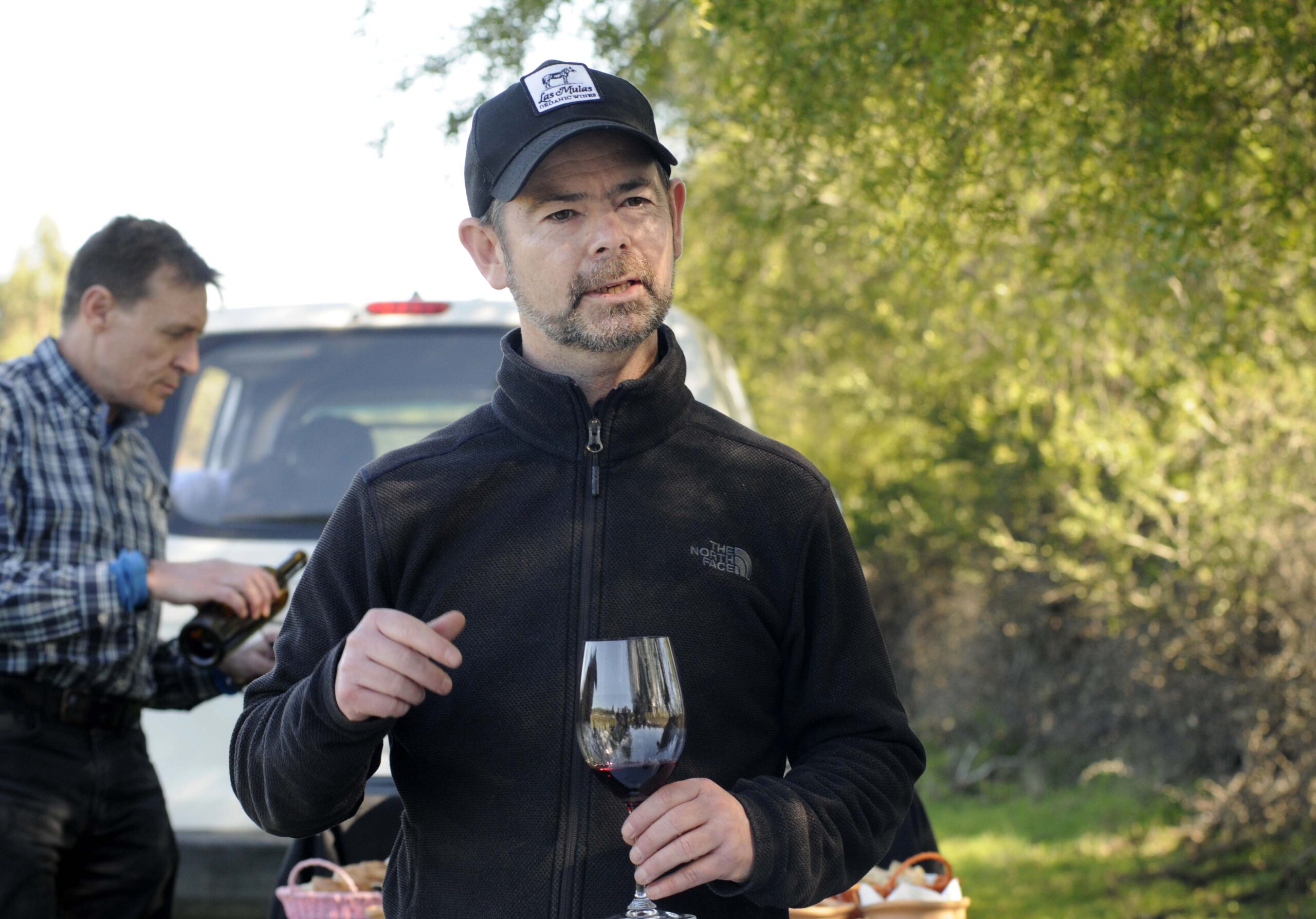
Gillmore Loncamilla VIGNO Carignan 2018 Maule, Chile
This spends 18 months in neutral French oak and a 2000 litre botti. Supple, fresh and direct with lovely bright, vivid blackcurrant and black cherry fruit. Very expressive with keen acidity: juicy and expressive with some elegance. Notes of dried herbs, too, and this is salty, not heavy. 94/100 (JG)
Aromatic herbs, potpourri and rose petals, lovely, fresh and laden with red berries – Energetic, zippy with a deliciously moreish grainy texture and a delicately salted finish 95 (LG)
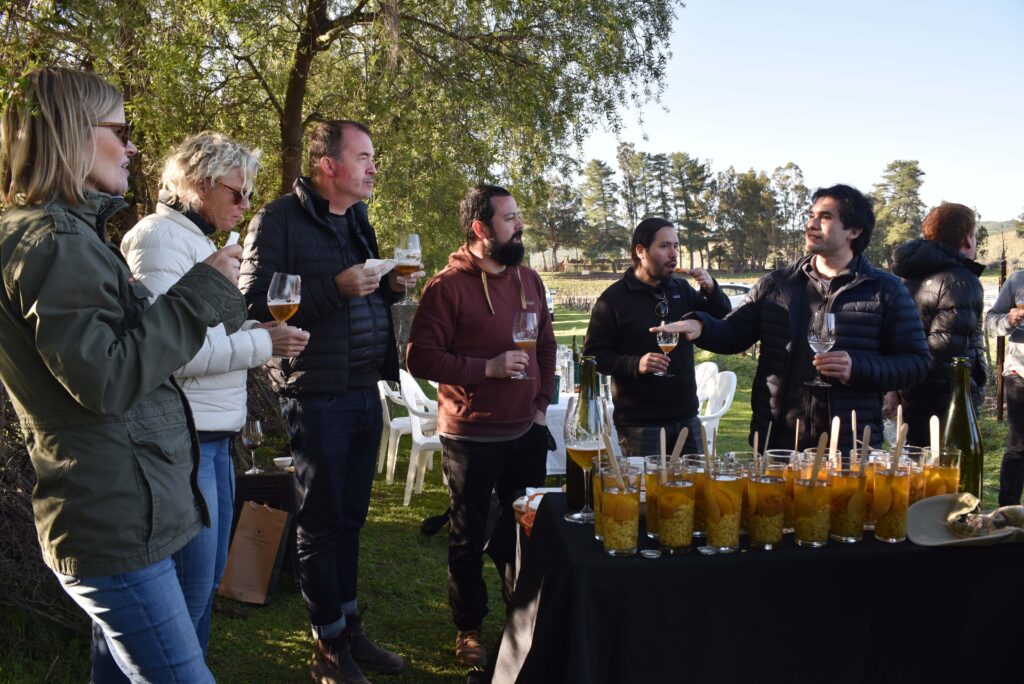
Undurraga La Soledad VIGNO Carignan 2018
This is 92% Carignan and 8% Cinsault aged for 16 months in a 5000 litre foudre. Linear, juicy and bright with taut, vivid black cherry and blackberry fruit. There’s a distinctive firm acid line with savoury, earthy hints and some dried herbs. Compact and juicy with a citrussy edge to the fruit. Linear and taut. 92/100 (JG)
Supple, salty, structured and fresh with sour cherry, blueberry and brambles – concentrated red and black fruit and a chalky finish. Fine, citrus fresh and sapid. 93 (LG)
Bouchon Cauquenes Sur VIGNO Carignan 2020
This spends 12 months in a 3500 litre foudre. Floral aromatics with cherries and plums. Nicely perfumed with lovely fruit expression. Fine and vivid with lovely cherries and plums, and some nice blueberry notes. Good acidity with lovely precision, and fine-grained tannins. 94/100
Dry, supple, intense and fresh with dark plums, cherries, blackcurrant and a super subtle touch of liquorice. gorgeous chalky tannins and an elegant structure with a hint of potpourri. 95 (LG)
Casas Patronales Cauquenes VIGNO Carignan 2019
14.4% alcohol. This is 50% aged in foudres and 50% stainless steel, and comes from 60-80 year old vines. Sweetly aromatic on the nose, with strawberry, cherry and raspberry. The palate is vivid and spicy with lovely depth and notes of dried herbs and mint, as well as some chocolatey edges. Nice acid line. 92/100 (JG)
Blackberry, liquorice root. strawberry, cherry, blackberry and spiced plum. Complex and layered with cooling herbs and dark chocolatey spices 93 (LG)
Carter Mollenhauer Triquilemu VIGNO Carignan 2020
12.8% alcohol. From a 0.6 hectare parcel beside the creek, rich in granitic material. This is alluvial, brought from the surrounding hills. This is from a warm year, and is fermented in an open vat. The vineyard tends to reduction, so using an open vat helps, and maceration is 35-40 days. 10% whole cluster. Vivid and expressive with lovely acidity, and some nice grippy tannins. Bright and expressive with taut raspberry and blueberry fruit as well as some citrus peel notes. 93/100 (JG)
Salty sour cherry, blackberry and raspberry – bitey, chewy lemon fresh and prone 93 (LG)
Lapostolle Empedrado VIGNO Carignan 2020
From a 60 year old vineyard, the winemaker describes this as a ‘rebel wine’ that they had to hide from consultant enologist Mr Rolland. Destemmed with 35 days maceration and ageing in old oak. Juicy, fine and taut with lovely red cherry and blackberry fruit with nice tannins. Tart and grippy with the tannins accentuated by the acidity. Firm. 91/100 (JG)
Littered with English hedgerow fruits, blackberry and sour Autumnal flavours, lush, supple and chewy 92 (LG)
Garage Wine Company Triquelemu VIGNO Carignan 2018
From 4 hectares of vines, fermented in stainless steel lagares, this spends two winters in neutral oak. Vivid and intense with juicy tart cherry and raspberry fruit. Taut, intense and pure showing a linear, focused sense of personality, this is direct and fine with amazing purity and linearity. 94/100 (JG)
Fresh, taut and fruity – layered with spice, sour cherry and strawberry – salty and fresh – delicious 95 (LG)
We then moved onto a second vineyard of old Pais. This is in Huerto del Maule, and it’s organic. The vines are old Pais grafted over to Carignan and Malbec, and here they are trying to avoid cultivation, moving towards regenerative viticulture. They are trying to leave grass in the row, with mowing. This creates a higher risk of frost in spring, so they have introduced a frost fan.
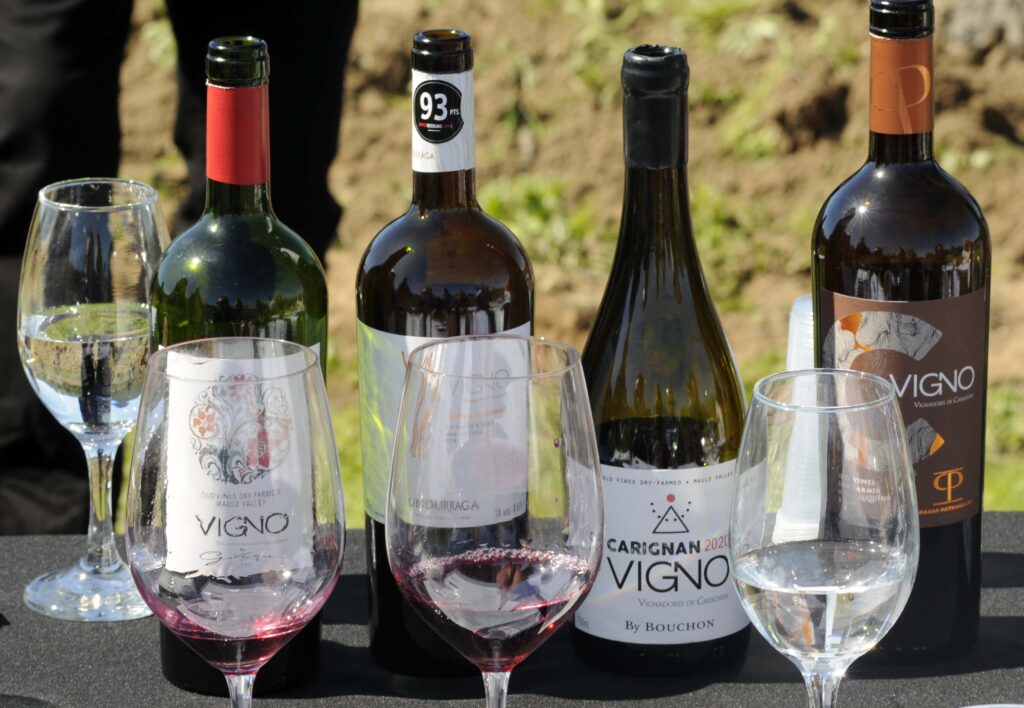
Miguel Torres Huerte de Maule VIGNO Carignan 2018
Matured in old French oak, This is from a warmer vintage, picked in March. Taut and slightly rubbery with a reductive nose showing vibrant raspberry fruit. This has high acidity and firm tannins with a sense of vibrancy. Lively and juicy. 90/100 (JG)
Blackcurrant and strawberry – very zippy and tight 89 (LG)
De Martino VIGNO Carignan 2019
This is from Sauzal, and it’s 90% Carignan and 10% Pais, Mourvedre and Carmenere. 6 months in old barrels and then foudres. Supple, juicy and bright with good acidity and nice firm spiciness under the raspberry and cherry fruit. Has signs of development and some grip. 92/100 (JG)
Fragrant, clean and mouth puckeringly fresh with sour cherry and spiced raspberry and a chewy tannic texture 93 (LG)
Valdiviseo VIGNO Carignan 2020
14.5% alcohol. Matured in clay: Italian, fired at a temperature where it still allows some oxygen transmission. Ripe and expressive with nice sweet raspberry and cherry fruit, showing some generosity and also lovely texture. This has some grip, with hints of earthy clay in the background, but it’s already approachable. Very fine texture. 93/100 (JG)
Fresh, zippy – mouth-watering sweet ripe red fruits and a lovely chalky textural complexity. Delicious tannins and structure 94 (LG)
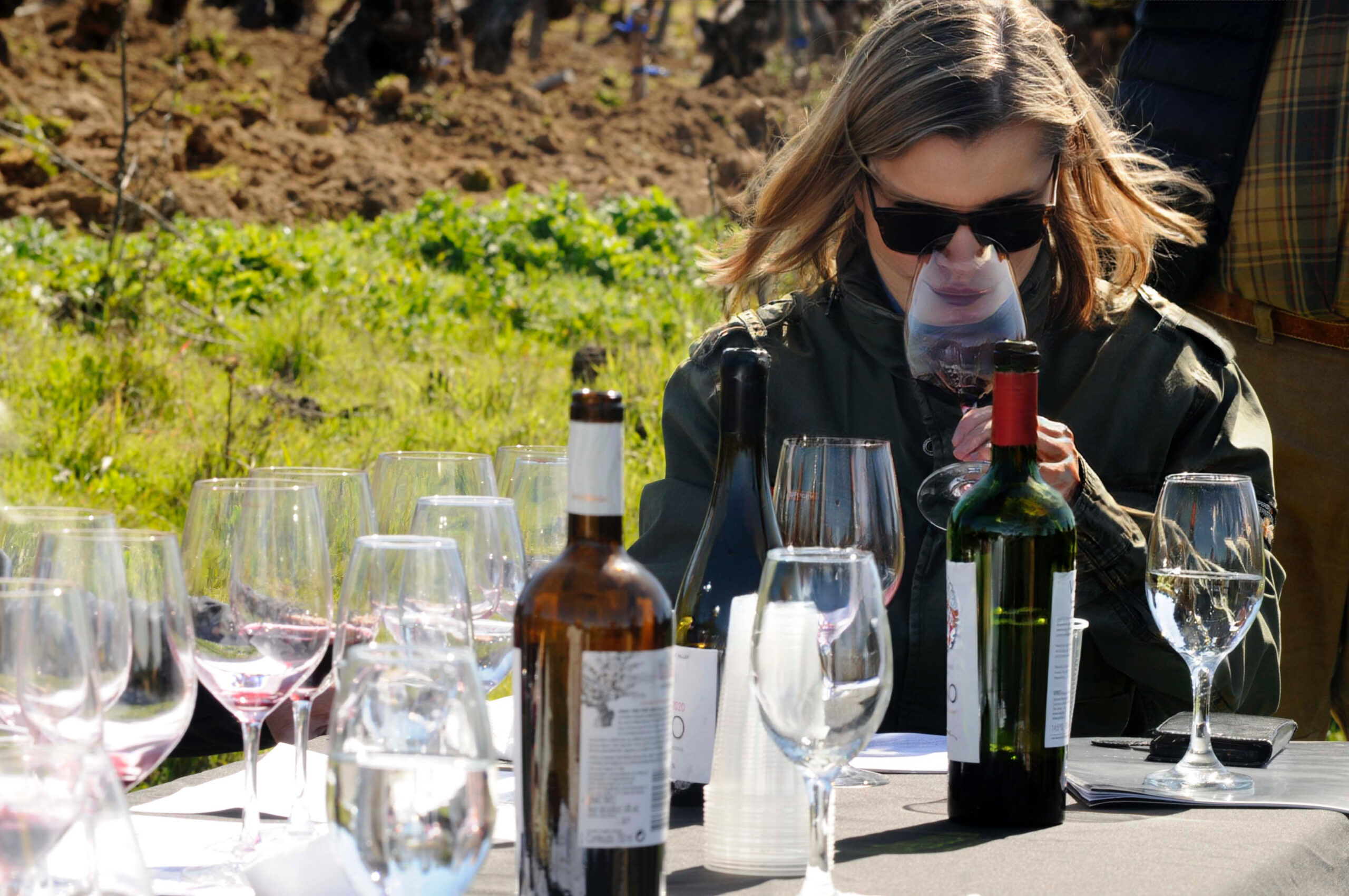
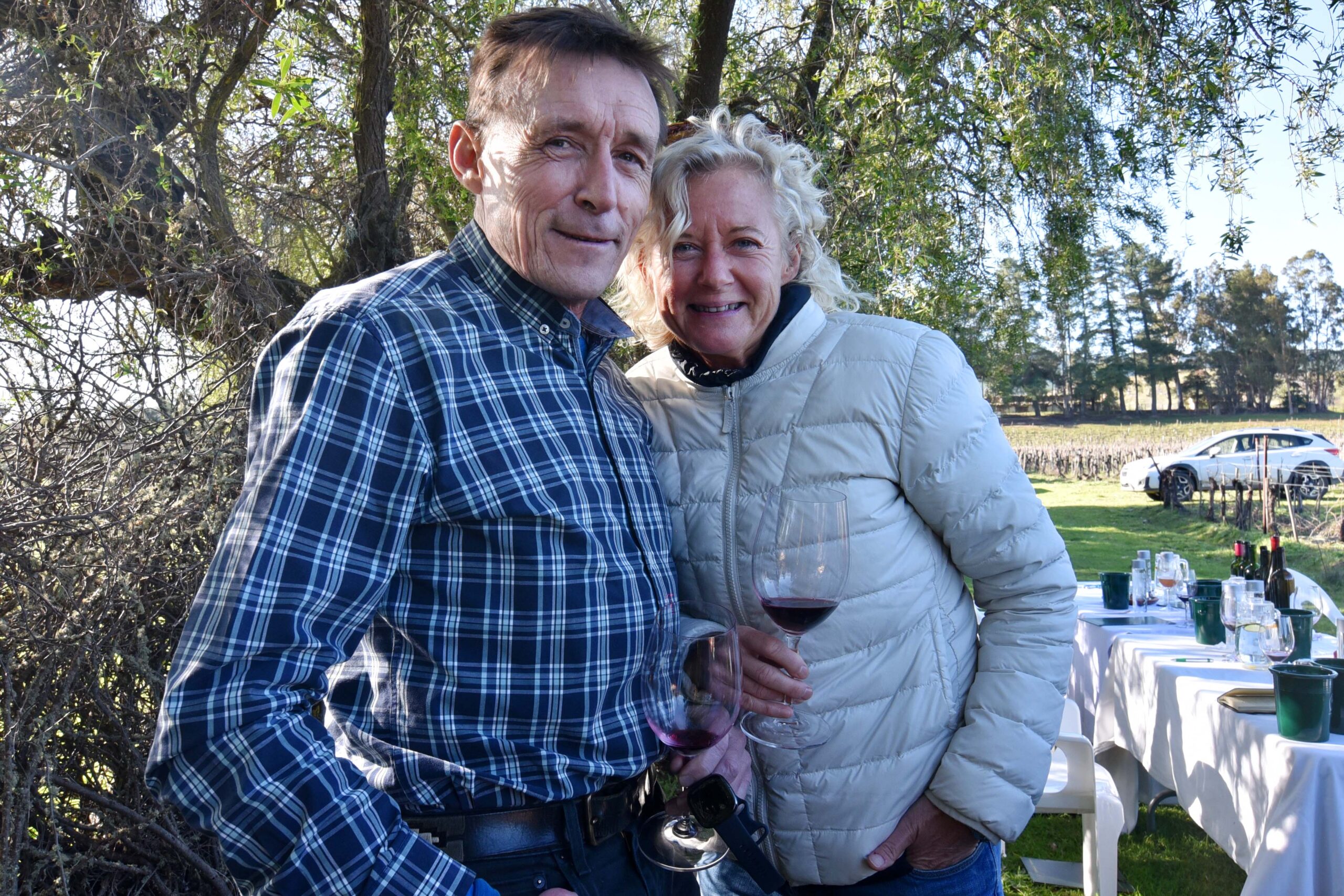
Emiliana Melozal VIGNO Carignan 2020
Emilio Contrero is winemaker here. This is fermented in open tanks with just a few punchdowns, then 65% is matured in foudre and 35% in small oak. Organic, 13.5% alcohol. Nice ripeness, with sweet, rich cherry and plum fruit showing spicy depth and a sweet core of fruit. Nice purity, good structure and a slight chocolatey edge. 93/100 (JG)
Lovely fresh, fruity and ripe – chalky blackberries, salted plums and deliciously spiced dark cherries 92 (LG)
Bodegas Re Melozal VIGNO Carignan 2018
This spends 24 months in foudre, and weighs in at 14.7% alcohol with a relatively high pH for Carignan of 3.5. Savoury and spicy and quite old school with some volatile acidityand a savoury spicy character. There’s some oxidative development here. 87/100 (JG)
Warm chewy, smoky and dark – wet forest floor and hot spice 89 (LG)
Morande Melozal VIGNO Carignan 2020
This is Carignan grafted onto Pais. 87% Carignan with 13% Syrah, 13% alcohol, 18 months in foudre. Fresh and supple with ripe black cherry and blackberry fruit, showing supple, juicy cherry and blackberry fruit. This has lovely flesh and depth, and is really nicely balanced. 93/100 (JG)
Delicious sour raspberry jam, red cherry and blackberries, grogeously fresh and sinewy 94 (LG)
PS Garcia VIGNO Carignan 2016
From a 1958 planting of Carignan in a warm spot, made by Félipe Garcia. This spends 26 months in French oak (neutral). Some savoury, spicy development here with a grainy edge to the fruit. It’s a bit grippy, with a drying finish that follows sweet blackberry and cherry fruit. Complex and vibrant with good acidity and some savouriness. 92/100 (JG)
Floral potpourri, salty Asian plum and blackberry – sublimely silky and layered with chewy mouth puckering tannins 92 (LG)
Find these wines with wine-searcher.com
